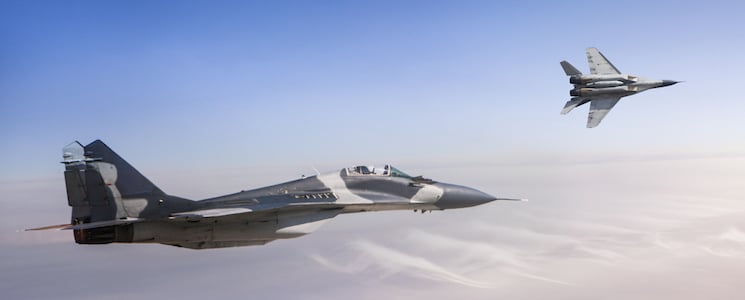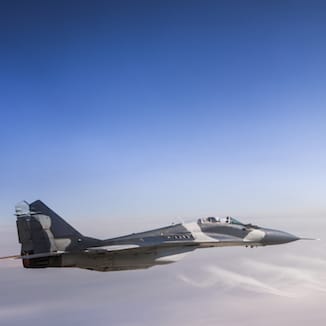
In tandem with a major surge in commercial airline production, the global defense sector is in for a long period of expansion. Captain Global Advisory expects steady growth in military spending over the next decade – anywhere from 3% to 5% per year through 2027.
That’s good news for those operating in a specific set of countries: USA, China, Saudi Arabia, Russia, India, France, UK, Japan, Germany, and South Korea collectively make up 73% of all global spending on defense ($1.27 trillion). The U.S. leads the pack with $610 billion, nearly three times more than China’s military spending at number two. China spent $228 billion. U.S. military spending is greater than the next seven biggest military spenders combined.
This growth is being driven by a more contentious global arena. The U.S., China and Russia are jockeying for position in various theaters. They are either seeking expansion or to reinforce their position around the globe. The U.S. president not only placed greater focus on increased military spending, he is pressuring NATO and other allies to raise defense budgets. Meanwhile, Chinese ascendency in Asia is being flanked by growing interest in Africa and Australasia. Across the planet, regional conflicts have forced many others to seek stronger military resources.
The geopolitical situation is paralleled by an increase in terrorism, as well as cyberthreats that can cripple military systems, undermine infrastructure, and paralyze a nation. Further trends influencing military spending include the advent of nextgen weapons, and an abundance of obsolete or worn out equipment, some of it a relic of the Cold War. In addition, the appearance of cheaper air platforms, drone technology, and emerging economies in the developing world have added a new dynamism to the sector.
Money is being spent on a great many areas. This includes equipment, manpower, training, drones, R&D, cybersecurity, and replacement of aging fleets of ships, tanks, and aircraft. OEMs and suppliers can anticipate positive revenue growth in the coming years.
But not everyone will benefit. The need to reduce costs, streamline operations and boost efficiency has necessitated a change in approach. Those who succeed will forge resilient partnerships and alliances. Mergers and acquisitions are likely to increase. Every supplier must grapple with how best to achieve economies of scale. Corporate strategy must embrace these shifts and come to terms with new ways of doing business.
While quality, schedule performance, and functionality remain vital, cost has taken center stage. Fixed price contracts are becoming more frequent. Gone are the days of cost overruns, missed deadlines, and unrealistic promises about equipment performance.
Program management must take advantage of digital technology to establish real control over delivery schedules and end-to-end supply chain synchronization. This will enable complex discrete manufacturers of defense systems to deal with geographically dispersed operations spanning multiple business units while maintaining full traceability. Any component or system issue or failure across the entire equipment lifecycle can be tracked back to the exact cause and remedied rapidly.
This cannot be achieved by continuing to operate with disparate systems for Product Data Management (PDM), Computer-Aided Process Planning (CAPP), ERP, Manufacturing Execution Systems (MES) and Quality Management. The demands of the market require that users no longer must jump from screen to screen to stay on top of work processes. Lack of system integration, manual rekeying of information, and manually exporting data from one system to another have no place in the modern digital manufacturing enterprise.
Requirements for component serialization demand a watertight system where every item within the supply chain has a specific ID that can be traced from source to end of life. Data must be trustworthy at the point of installation on the assembly line. The marrying up EBOM with MBOM, or as-designed with as-built and as-maintained documents should be done automatically at a system level in real time. Faulty parts or systems sent for replacement or repair can no longer become lost in administrative inefficiency.
The only way for this to happen is via an end-to-end enterprise digital transformation. A digital thread should exist so data can seamlessly traverse the supply chain throughout the entire product lifecycle. iBase-t’s Solumina software is the way to institute this in the enterprise. Design specifications, engineering models, as-builts and operational data can be easily reconciled. A digital thread can be established that offers the opportunity to streamline product and service design, increase product quality significantly, build closer relationships with supplier and asset owners, and increase profitability.
The digital thread, with its emphasis on digitized records, 3D models and digital twins, then, represents the way forward for anyone in the defense industry. Contact iBase-t today to find out how Solumina can help you establish the Digital Thread in your business.


